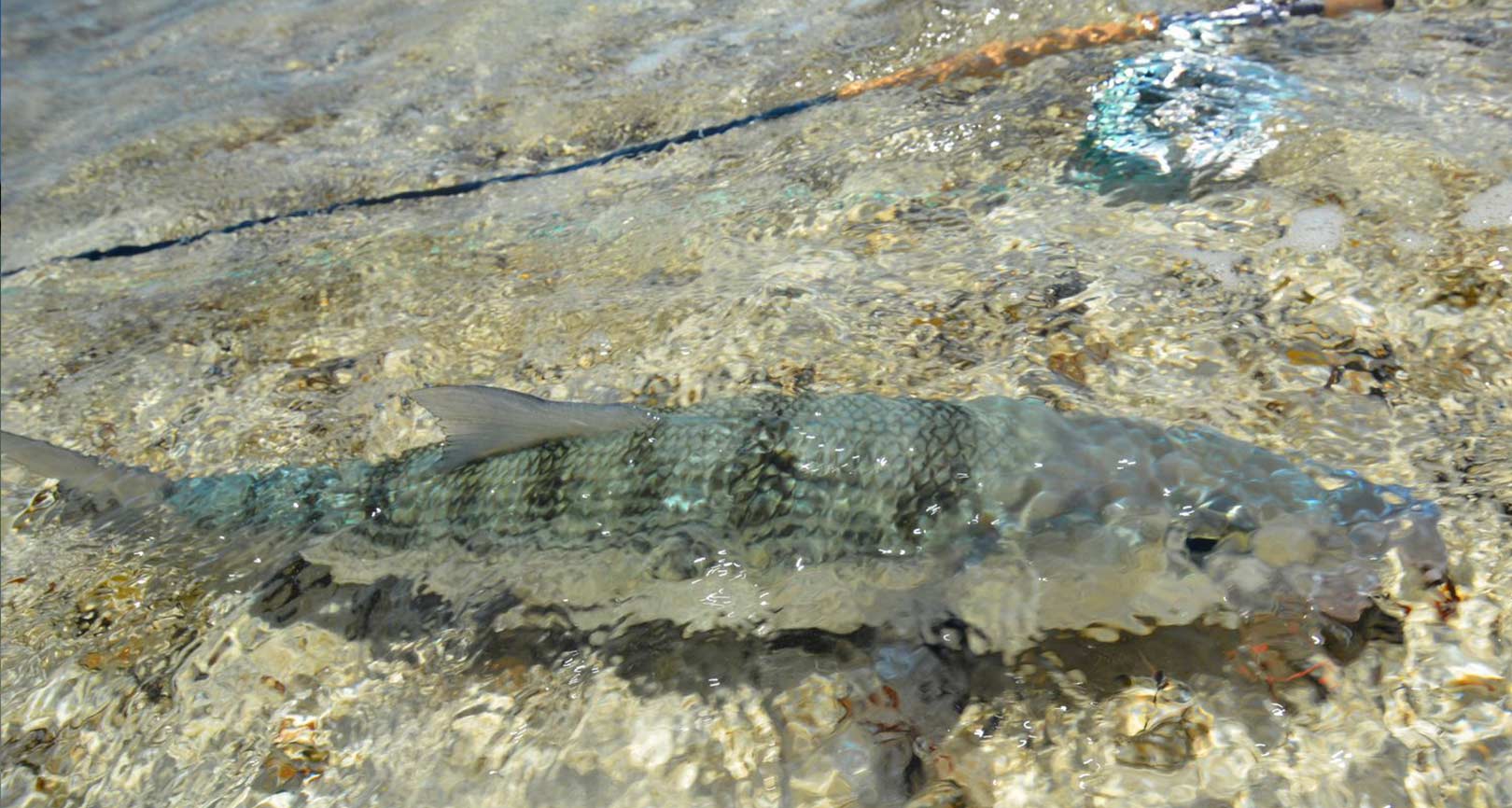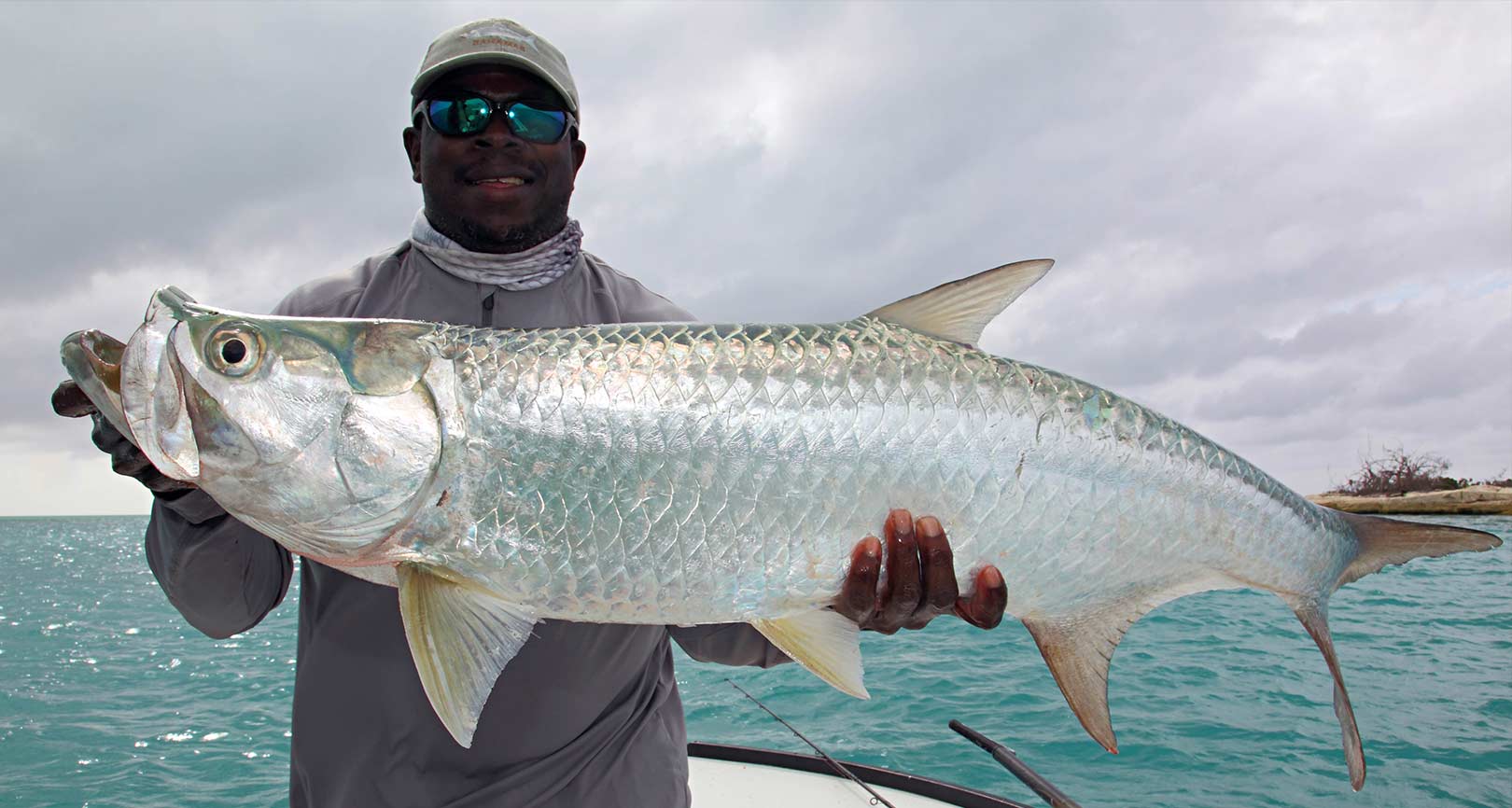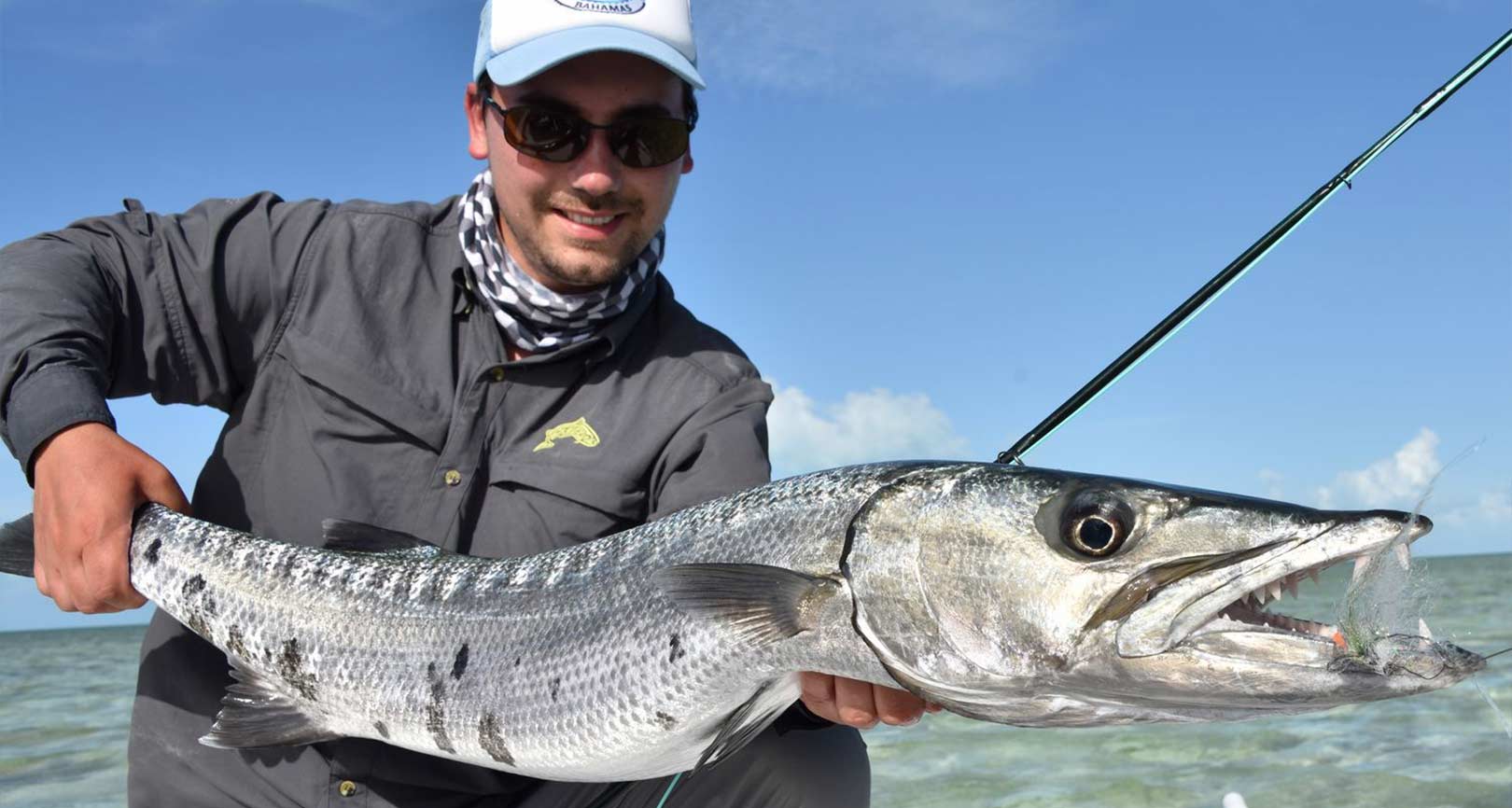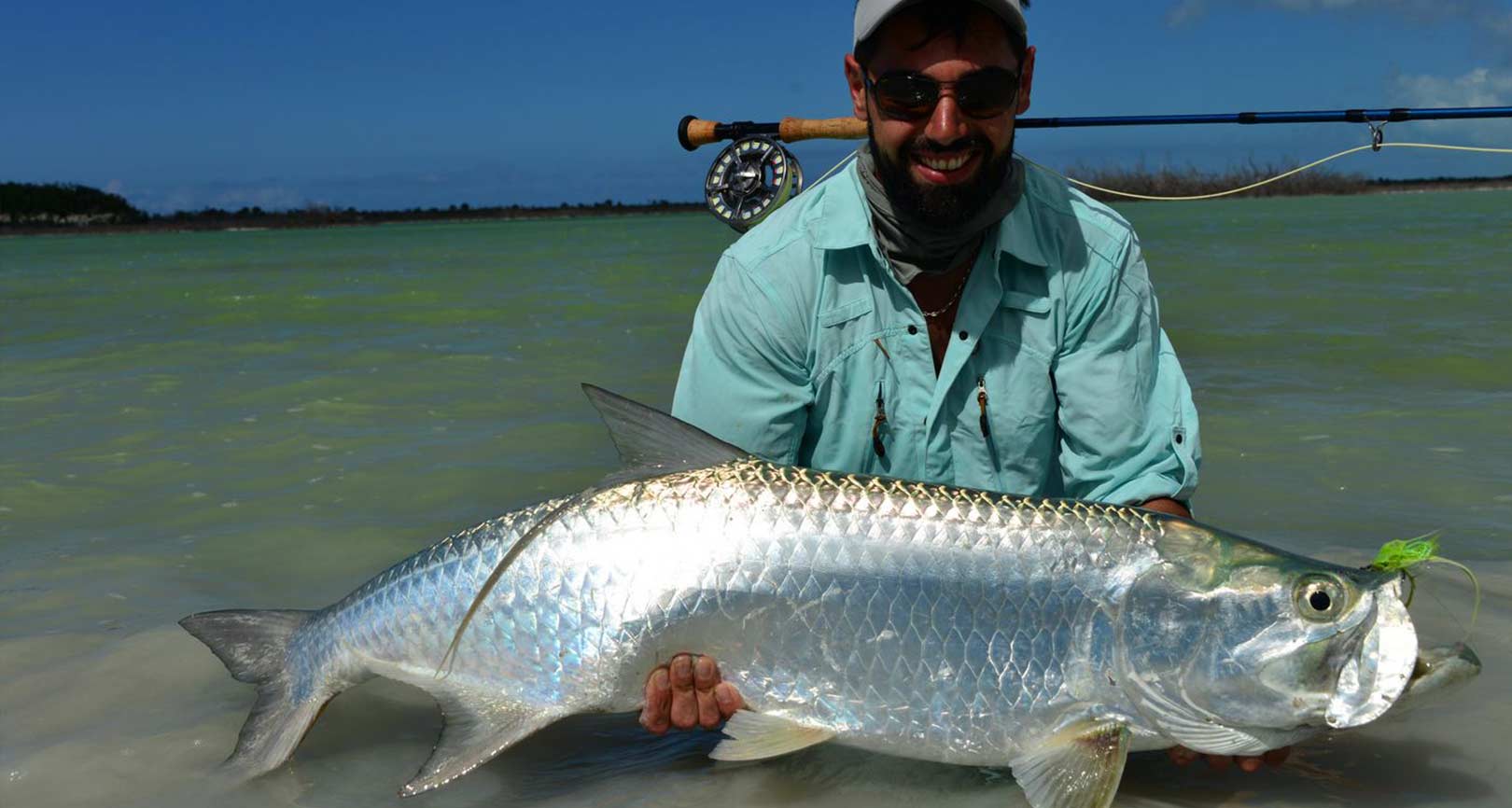
BONEFISH
It’s our bread- and butter fish, found on almost every flat in the area and fished for from a boat or simply wading the hard-bottomed flats and lagoons. The average size will be in the 3- to 4-pound range, yet bigger specimen of 5- to 7- lbs are caught regularly. Double-digit fish are a possibility, the island record being a 17,6 lbs whopper!!
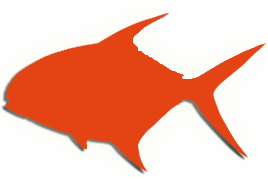
PERMIT
Permit reign supreme among anglers here and we just know where to look for them and find them regularly, sometimes in smaller schools of 2 to 5 fish or single fishing that are following rays. Their average size, about 20 pounds, is pretty impressive and there are quite a few fish ranging from 25 to 40 pounds swimming around! It’s probably one of the best places in the bahamas to fish for permit.
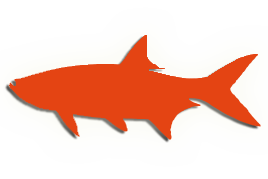
TARPON
While we are not a tarpon destination per se, we do have a population of resident fish, in baby sizes of 10 to 30 lbs, all year long, while some areas will have migratory fish in larger sizes from 40 to 100 pounds, notably in the turtle sound lagoon from may to october.

TRIGGERFISH
Sometimes called the “poor man’s permit”, they remain a very interesting species to fish for with fly tackle: the triggerfish are wary yet will readily eat a bonefish shrimp or a small crab fly while tailing on the flats. They are a great catch and definitely great practice for permit fishing!
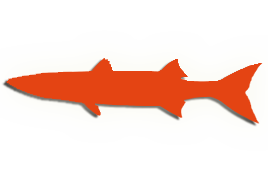
BARRACUDA
Barracuda are numerous on the flats and often big. We advise our customers to always keep a 10-weight rod rigged up and ready in the boat. ‘cudas can also be caught with spin gear on stick baits or poppers.

JACKS
We have several interesting, hard-fighting jack subspecies at hand to keep fly and spin anglers happy; horse eye jacks, yellow jacks, bar jacks as well as pompano will keep light tackle anglers amused.

SHARKS
Sharks might not be on everyone’s list yet they are superb fighters on fly and spin tackle. We have a very health shark population, ranging from smaller species (20 lbs) to huge monsters (several hundred pounds) in and around the lagoon and we will organize specialized shark-fishing trips upon request. Tigers, lemons, silkies, hammerheads, gray reef sharks… everything is possible!
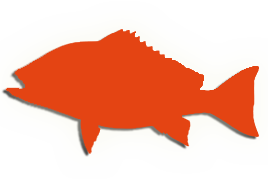
SNAPPER
Upon request, we can also organize a trip to the tide channels to fish for snapper: mutton snapper, gray snapper, yellowtail snapper as well as cubera snapper are present in our waters.
Tackle
Rods
Bonefish: 9’ for line weights 7/8
Permit: 9’ for line weights 9/10
Barracuda/Tarpon/Jacks: 9’ for line weights 10/12
Rods with a saltwater action (faster, more backbone) are preferable, brands like THOMAS AND THOMAS or WINSTON have great rods in their lineup
Reels
Reels need to be saltwater resistant, anodized and easily cleaned with a smooth, strong and easily adjustable drag mechanism (ABEL, SAGE, NAUTILUS, etc…).
Backing
To avoid trouble, reels need to have at least 220 yards of very visible 20/30 lbs backing.
Lines
For optimal comfort and results, so-called tropical fly lines are best. They are stiffer in general to compensate for the heat, their bellies will cut much better through the wind and will be less prone to abrasion and tangling. According to personal belief, experience and stealth purposes, neutral colored lines (sand, sage, sky blue,..) should perform best (MONIC, SCIENTIFIC ANGLER, CORTLAND, etc…).
Leaders
Bonefish : 9 to 10 feet in length, made of clear, stiff monofilament (because of the heat and to cut through the wind…3M, VARIVAS). Fluorocarbon tippets in 8 to 12 lbs breaking strength.
Barracuda, Jacks, Tarpon : three feet of 60 lbs monofilament (acting as a butt section) ; two feet of 30 to 50 lbs monofilament (class tippet) ; a 16 inches of 70 to 100 lbs monofilament (shock-tippet) for an overall length of about 8 feet. Steel trace for barracuda and shark fishing is indispensable.
Permit: Length: between one and two rod lengths overall, according to prevalent conditions. Fluorocarbon tippets in 16 to 20 lbs breaking strength
Flies
Bonefish : the classic patterns (Christmas Island Special, Crazy Charly, Puff, Gotcha, Bonefish Special, etc…) are perfect in lighter tones, all orange-colored patterns are also very useful, in sizes 2 to 8 and several degrees of weight (eyes). A few weedless patterns will be useful near the mangroves. Very small patterns in size 8 are sometimes very effective.
Permit: crab patterns (weedless), shrimp (in size 8 on the flats and all the way to a size 2 in deeper water). Del’s Merkin variant in tan, Dean Perez Velcro Crab in tan, Pluglisi Mantis Shrimp,…
Barracuda, Jacks : Foam poppers and gurglers, Clouser Minnows (chartreuse over white, red over white, black over red), Deceivers (chartreuse over white, red over white, black over red). Hook sizes 1/0 to 3/0 for the smaller jacks.
Nota Bene: Please consider to change leaders/tippets regularly. Change tippets after three or four fish and bring enough flies, count two to three dozen for a week’s fishing. Also: bring a backup rod and a spare reel, lines and backing, just in case!
Equipment
Quality polarized glasses, they are essential! Brands like MAUI JIM, SMITH or COSTA DEL MAR,… provide a great choice and outstanding performance. Choose darker tones to protect your eyes against bright sunshine and glare.
Hat or cap with large, dark underbrim to cover the glasses,
Diamond hone or file to resharpen your hoor before and during fishing,
Sturdy pliers to cut monofilament and to remove hooks,
Steel trace or piano wire 30/50lbs (for barracuda and shark fishing),
Fly line cleaner and treatment,
Oil or silicone spray to lubricate and treat the reels after a mandatory daily rinse with fresh water,
Insect repellent (Off, Cutters, extra strength tropical formula…),
Backpack or chest pack to pack drinking water and essential items,
Small, waterproof camera,
Small first aid kit and pharmacy (sunscreen, after-sun lotion, chapstick, aspirin, personal medication…),
Wading boots and wading socks (Patagonia ou Simms) or neoprene flats booties,
Clothing
Choose “technical” clothing, i.e. quick-drying, comfortable apparel for tropical climes and flats fishing that offers good sun protection; long-sleeved shirts and pants, a neck gaiter (brands: FIELD & FISH , SIMMS, PATAGONIA, EX OFFICIO, etc…).
Risk of precipitations is (usually) limited but we strongly advise to bring a good rain jacket that will double as a wind shell when running the boat at full speeds.




